https://vimeo.com/1038401163 Welcome back to our weekly update. Another Friday the 13th? Oooph. I hope everyone gets through the day without any black cats, walking under ladders, you know the drill. What are you superstitious about? We hope you have a great day, nonetheless. On this update, we’ll talk heat pump water heaters, the effects of Read more
water heating

Welcome back to our weekly update. Another Friday the 13th? Oooph. I hope everyone gets through the day without any black cats, walking under ladders, you know the drill. What are you superstitious about? We hope you have a great day, nonetheless. On this update, we’ll talk heat pump water heaters, the effects of potential tariffs from the new president, and our new podcasts.
Acquisition extends a long-term strategy for market growth and channel expansion. Atlanta—Rheem has announced its intent to acquire Nortek Global HVAC (NGH), a leading manufacturer of air conditioning products, from Madison Industries. NGH is based in O’Fallon, Missouri with manufacturing in Saltillo, Mexico, and a distribution center in Poplar Bluff, Missouri. “Nortek Global HVAC has Read more
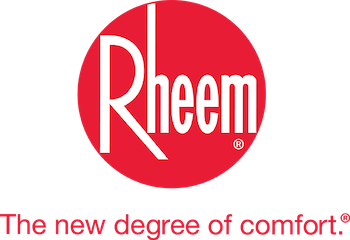 “Nortek Global HVAC has a history of delivering market leading innovations going back over 100 years. Like Rheem, NGH has a collaborative culture with an unwavering commitment to the customer,” said Mike Branson, President Global Air at Rheem. “NGH has a remarkable team that brings unique products, operational capabilities, and market channels to complement Rheem’s expanding Air and Water businesses.”
“Nortek Global HVAC has a history of delivering market leading innovations going back over 100 years. Like Rheem, NGH has a collaborative culture with an unwavering commitment to the customer,” said Mike Branson, President Global Air at Rheem. “NGH has a remarkable team that brings unique products, operational capabilities, and market channels to complement Rheem’s expanding Air and Water businesses.”
I was talking the other day with my buddy who lives northern Wisconsin on the topic heat pump water heaters (HPWHs). You see, he is in the market for a water heater and was asking my advice on those particular units. Wanting to know more myself, I pulled up some info and the more in-depth Read more
I was talking the other day with my buddy who lives northern Wisconsin on the topic heat pump water heaters (HPWHs). You see, he is in the market for a water heater and was asking my advice on those particular units. Wanting to know more myself, I pulled up some info and the more in-depth I got, the more I wanted to know. Cold weather performance, special ducting, size of mechanical space, accessibility to air, cooling and conditioning of adjacent space are all very important topics of discussion.
But, wait a minute, I thought to myself, I can use some of my “superpowers” as an editor in the trades these past 20+ years to ask people who are more in the know about HPWH than me.
I recently reached out to few people I trust to give me honest assessments of these units.
Advantage Heat Pump Water Heaters
According to Eric Aune, Aune Plumbing, Heating & Drains, there has been a ton of marketing to the public, and even more incentives for installation. “Local utilities are offering rebates upwards of $2-3K in some places, and here in Minnesota, we aren’t seeing rebates that high but it’s clear why the rebates are offered—because its lowering and spreading the load on the grid over longer periods at lower consumption rates. The utilities are trying to stay in front of or (most likely) catch up to the growing demand and stress on the grids all across the country. HPWH’s are one piece to the puzzle.”
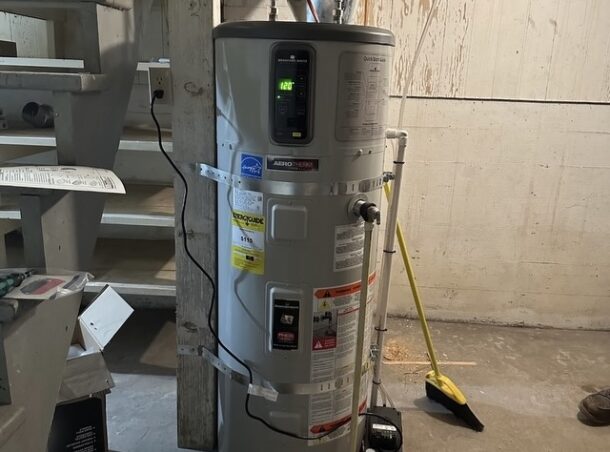
John Siegenthaler, P.E., Appropriate Designs, gives three bona fide advantages for HPWHs: One, they are excellent for capturing “surplus heat” (e.g., heat that’s present but not generated by another heat source for the purpose of warming the space). For example, solar heat gain to a garage, or heat generated by computer servers. Two, when properly applied, they can generate a given amount of DHW on about 1/3 the electrical input required by a standard “resistance type” electric water heater (tank or tankless). And three, some models are available that can operate on 120 VAC power, whereas all electric resistance water heaters require 240 VAC power.
But in Cold Climates?
But are these units considered more inefficient the more you climb the northern latitudes to colder climates? “Although heat pump water heaters are often placed in unconditioned spaces such as garages in southern locations, it would be a big mistake to do so in a cold northern climate where outside temperatures are below the minimum operating air temperature for the HPWH for weeks or months during winter,” says Siegenthaler. “The heating performance of any air source heat pump—ductless, central, air-to-water, HPWH, always decreases with decreasing air temperature—Putting any water heater in a cold space is not recommended. Standby heat loss would definitely increase.”
HPWHs have minimum air flow requirements, especially if placed in confined spaces, adds Siegenthaler. The I/O manual supplied with the unit should give all these requirements. “Some units allow ducting of outside air to the heat pump assembly on top of the tank, but I would only use this option in a relatively warm climate. Using ducted outside air also foregoes the cooling and dehumidifying benefit of the HPWH,” says Siegenthaler.
Living in Minnesota, Aune says, “HPWH’s capture/transfer the heat in the space surrounding them to the tank of water. When you talk about this here in Minnesota, it’s common for people to consider this inefficient since the we have to heat with a boiler or furnace, so aren’t we running our space heating system to provide heat for the water heater?
“The reality is the HPWH is able to capture and transfer a lot of energy without major negative effects on the conditioning and comfort of the space with a few considerations like ducting the less humid, colder air to the exterior of the house or even moving it with the furnace or exhaust fans,” says Aune.
According to Gary Klein, principal, Gary Klein and Associates, the majority of HPWHs sold today are hybrid HPWHs, and their efficiency is rated at 67.5 F and 50% relative humidity. “Very close to the temperature we keep the inside of conditioned buildings,” says Klein.
Klein suggests an interesting concept by managing the cold discharge air. “Install the HPWH in the basement near the space conditioning system. Use the return of that system to suck in the cold discharge air from the HPWH and distribute it throughout the house. Use a relay to link the fan to the HPWH. Let the thermostat decide if the air needs to be conditioned. Install a very large filter grille to bring air to the room where the HPWH is installed. (2-inch pleated filters).
“Need the ability to move at least 60 cfm per 100 watts of compressor, fan and control power. Warmer intake air increases the coefficient of performance (COP),” says Klein.
Siegenthaler points out that he did a column earlier this year that discussed a situation where a modern house used an air source heat pump for space heating, and combined it with a HPWH inside the house for DHW. Technically this puts the two heat pumps into a “cascade” relationship, says Siegenthaler.
“Think of the space heating heat pump as ‘feeding’ heat to the HPWH. It’s possible to show that the overall efficiency of this arrangement is lower than using a single air-to-water heat pump for both space heating and domestic hot water (DHW). I think that this is important because many builders, architects, energy planners, energy auditors, etc. don’t necessarily understand this concept. They assume that two heat pumps—one for space heating, and the other for DHW—are better than one.”
Siegenthaler stresses that the “ideal” scenario for a HPWH is to put it in a space where there’s “surplus heat.” “Don’t rob Peter to pay Paul,” says Siegenthaler.
There are plenty of such spaces, suggests Siegenthaler, especially in commercial buildings—manufacturing, heat from vending equipment or refrigeration equipment, cooking, laundry, computers, solar gain, attics that remain above 35ºF year-round, even mechanical rooms with lots of uninsulated piping, boilers, electrical transformers, greenhouses, cannabis grow houses, etc.
“Paraphrasing Patrick Henry, ‘Give me air, or give me death,'” says Klein.
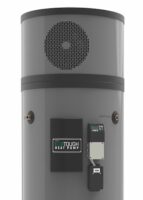
Designed to use one-third the electricity of traditional residential electric water heaters, new product ensures dependable, efficient hot-water delivery. Noritz America, a leader in tankless water heaters and high-efficiency combination boilers, recently previewed its new, ENERGY STAR-certified Hybrid Electric Heat Pump Water Heater for residential domestic hot water applications. Making its debut in Chicago at Read more
Designed to use one-third the electricity of traditional residential electric water heaters, new product ensures dependable, efficient hot-water delivery.
Noritz America, a leader in tankless water heaters and high-efficiency combination boilers, recently previewed its new, ENERGY STAR-certified Hybrid Electric Heat Pump Water Heater for residential domestic hot water applications.
Making its debut in Chicago at the 2024 AHR Expo in January, this newest addition to the Noritz offering consumes up to one-third of the electricity required by a standard residential electric water heater with a resistive element, yet maintains the same level of hot-water delivery. The “hybrid” designation denotes the inclusion of dual 4.5-kilowatt electric elements positioned at the top and bottom of the tank to provide backup water heating or accelerate recovery times when necessary.
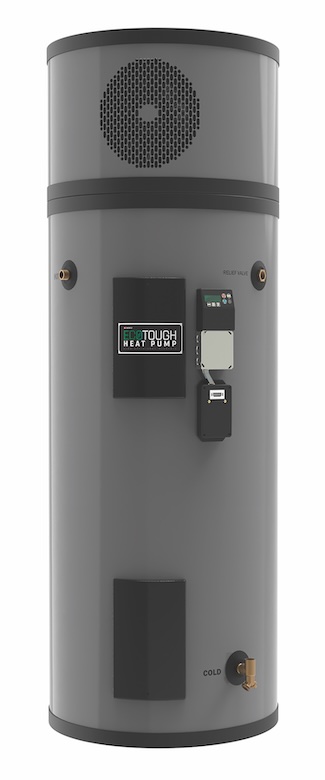 Set for an official launch on July 1, the new Hybrid Electric Heat Pump unit efficiently transfers heat from air to water, resulting in substantial energy savings for consumers seeking to reduce their utility bills. The Hybrid Electric Heat Pump is eligible for government rebates of up to $3,000, the kind of incentive that has made heat pump installations so attractive for both contractors and homeowners.
Set for an official launch on July 1, the new Hybrid Electric Heat Pump unit efficiently transfers heat from air to water, resulting in substantial energy savings for consumers seeking to reduce their utility bills. The Hybrid Electric Heat Pump is eligible for government rebates of up to $3,000, the kind of incentive that has made heat pump installations so attractive for both contractors and homeowners.
Handling hot water temperatures ranging from 50°F to 160°F, the product will be available in four sizes, with the model numbers here indicating the gallon storage volumes: (NHP50, NHP65, NHP80, and NHP120). The 120-gallon model, still a rarity in today’s market, is available by special order. UEF (Uniform Energy Factor) ratings range up to 3.48, highlighting its energy efficiency when compared to similar products in the market.
“At Noritz, our dedication to providing our customers with diverse water heating solutions drives our innovation,” explains Jason Fleming, Executive Vice President and General Manager of Noritz America. “The introduction of the Hybrid Electric Heat Pump not only addresses recent market and regulatory shifts nationwide, but also offers a product designed to save energy, lower maintenance and operating expenses for customers, and streamline installations and servicing for contractors.”
Key Features
- Cement lining: The specially formulated cement lining of the unit’s storage tank is designed to prevent the corrosive effects of hot water. By negating the need for a sacrificial anode rod, the lining all but eliminates maintenance requirements and the necessity for regular checks. (Neglecting to replace the anode rod can lead to premature tank failure in a conventional electric water heater.)
- Five operating modes: The Hybrid Electric Heat Pump offers users five different ways to operate the unit, depending upon user demand and current conditions: hybrid (standard), electric only, heat pump only, super (for high-demand situations), and vacation.
- First Hour Rating: The Hybrid Electric Heat Pump Water Heater’s first hour ratings are 58 gallons (NHP50), 70 gallons (NHP65), 86 gallons (NHP80), and 105 (NHP120).
- High-pressure rating: The unit has a pressure rating of 150 pounds per square inch (psi) WP and 300 psi TP. A temperature and pressure relief valve comes with the unit, pre-installed.
- Warranties: The cement-lined tank and all parts are covered by ten years of protection, plus a one-year warranty on reasonable labor.
- Approvals include AHRI, UL1995, CSA 22.2 No. 236, Low Lead.
For more information on the new Hybrid Electric Heat Pump Water Heater, visit: https://noritz.com/heatpump/
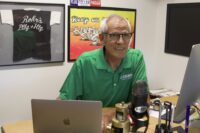
A Carlson-Holohan Industry Award of Excellence honoree, Bob “Hot Rod” Rohr travels across the country as a trainer for Caleffi North America, sharing his 40+ years’ of experience as a plumbing, radiant heat and renewable energy contractor, all while bringing his rubber-to-the-road experiences to life. Be honest, do what you say you will do. It’s that simple Read more
A Carlson-Holohan Industry Award of Excellence honoree, Bob “Hot Rod” Rohr travels across the country as a trainer for Caleffi North America, sharing his 40+ years’ of experience as a plumbing, radiant heat and renewable energy contractor, all while bringing his rubber-to-the-road experiences to life.
Be honest, do what you say you will do. It’s that simple, really.
If you bill your training as a technical event or class, make it that. Certainly, everyone of your attendees has an opinion, and that is a good thing. So at class end they get to decide if it checked the boxes they brought along to have filled. For example, a boiler piping presentation needs to have schematics of piping. I’d take it further and make the drawings as generic as possible.
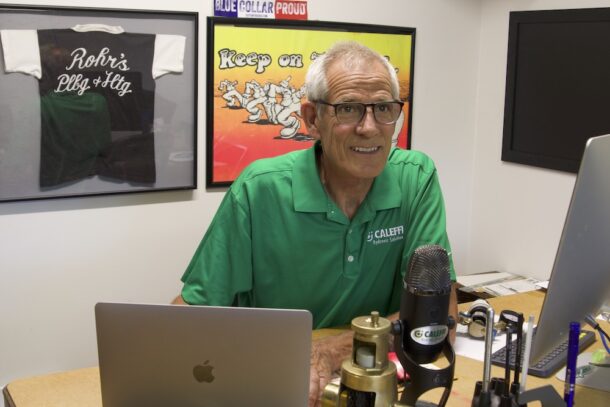
Fortunately I work for a manufacturer that publishes a very generic, non-biased trade journal. This makes for some excellent content for the classes.
But also be realistic in your expectations; not everyone in the room will be at the same level, and have the exact same expectations. Promote the event as basic, intermediate or advanced to help clear up the content. A trainer should, poll the room right off to get a feel of the experience level of the class. Ask occasionally if the info is meeting the needs or expectations. A trainer needs to be prepared to shift gears
Keep additional PPTs ready to go on your desktop if you need to raise or lower the content level, or bounce around to assure everyone gets something from their time commitment.
Know also that generous giveaways and CEU offerings will get some attendees that are there for the “goods” more so then the content. It’s easy to spot folks like that. They spend a lot of time looking at their phone.
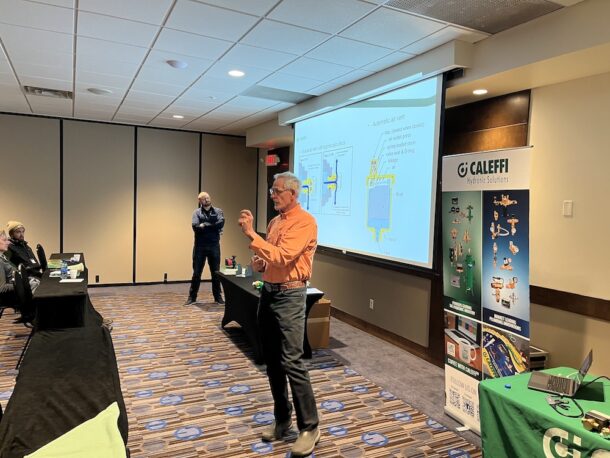
Someone is paying the trainer to get to the event and spend a few nights on the road. Expect the sponsor to have a product table, or some handouts that are brand specific. A few questions on a form or link to QR code to get feedback is helpful for trainers.
Timely topics help fill a room. Clever course names help people click on the training promos.
Like any trade, time on the job helps a trainer learn what works and what flops, so be prepared to change up your presentations or presentation style occasionally. A Toastmasters class can sharpen your presentation skills. Speak loud and clearly. Move around the room.

Watch big name, professionally-trained presenters. See how they move and observe the techniques they use to keep the room’s attention. Who is your favorite actor and why?
Got any tips or suggestions? Pass them along.
